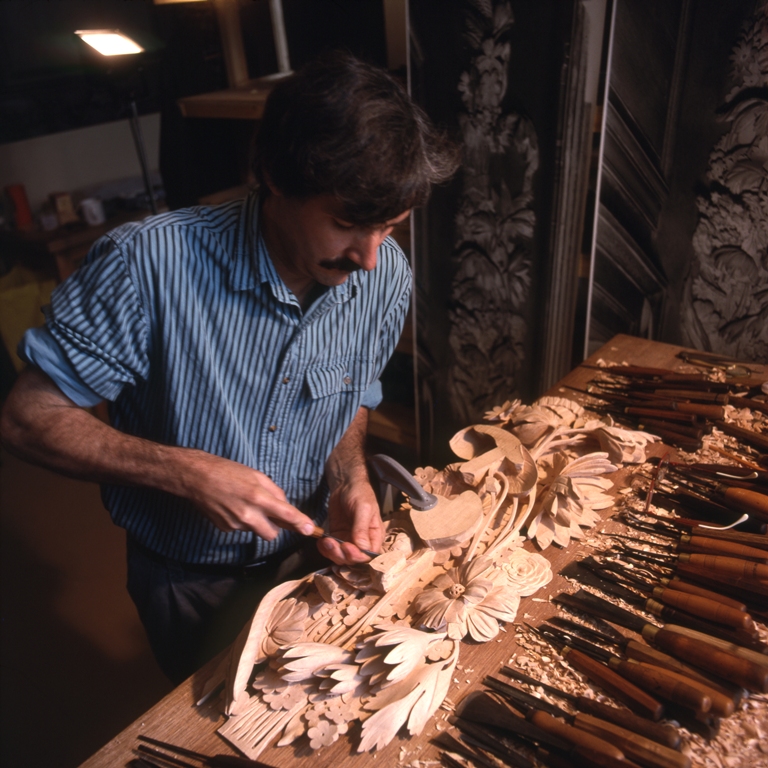On our cover, the cacophonous world in which we live–digital and artisanal, ephemeral and timeless–is rendered, ironically, in the disciplined quiet of limewood by the master carver (and prose master) David Esterly. Carving, Esterly has observed in his book The Lost Carving: A Journey to the Heart of Making, is a metaphor for many things. I’d count among them the energetic meeting of past and present that you will find in his article on the centuries long tradition of letter-rack paintings that inspired his own creations shown here.
 I hope Esterly’s article will lead you to his book, where you will find in addition to his account of restoring a masterwork by Grinling Gibbons lost to fire at Hampton Court Palace, a dramatic meditation on physical skill, creativity, and beauty that will excite anyone who has ever, for instance, admired a great cartouche, wondered at the invidious distinction between craft and art, or pondered the fashions of the art world, where the word discipline is unknown unless it refers to the weirder precincts of sex.
I hope Esterly’s article will lead you to his book, where you will find in addition to his account of restoring a masterwork by Grinling Gibbons lost to fire at Hampton Court Palace, a dramatic meditation on physical skill, creativity, and beauty that will excite anyone who has ever, for instance, admired a great cartouche, wondered at the invidious distinction between craft and art, or pondered the fashions of the art world, where the word discipline is unknown unless it refers to the weirder precincts of sex.
There is much more to the story of The Lost Carving than the restoration of a masterpiece, just as there is more than the history of a collection of netsuke to Edmund de Waal’s The Hare with Amber Eyes, which Esterly’s book resembles in its cultural reach though it is closer to my heart for its personal anxieties, literary references, and winning descriptions of the natural world. And since we are on the subject of metaphors, the carver’s art is a good one for what we do here–run against the contemporary grain but, like David Esterly, insist on bringing the past forward and uniting it with a lively present.
Elsewhere on the planet there is chatter about New York’s new mayor and his move to Gracie Mansion. In what has been described as a kind of populist putsch, Bill de Blasio and his wife Chirlane McCray have removed the antiques from the private rooms and installed what appears to be an off the rack West Elm showroom, suitable, they say, for a family of four that includes two busy teenagers. Those rooms were handsomely furnished by Jamie Drake under the aegis of the previous mayor, who pointedly lived elsewhere. They were meant to be atmospheric, seen but not used. The new mayor and his family should live as they choose, but having visited Gracie fairly recently I’d say this part of the 1799 mansion is way too frail for daily use. The city ought to consider purchasing an apartment for its mayors and shore up this old beauty for posterity, antiques and all.

